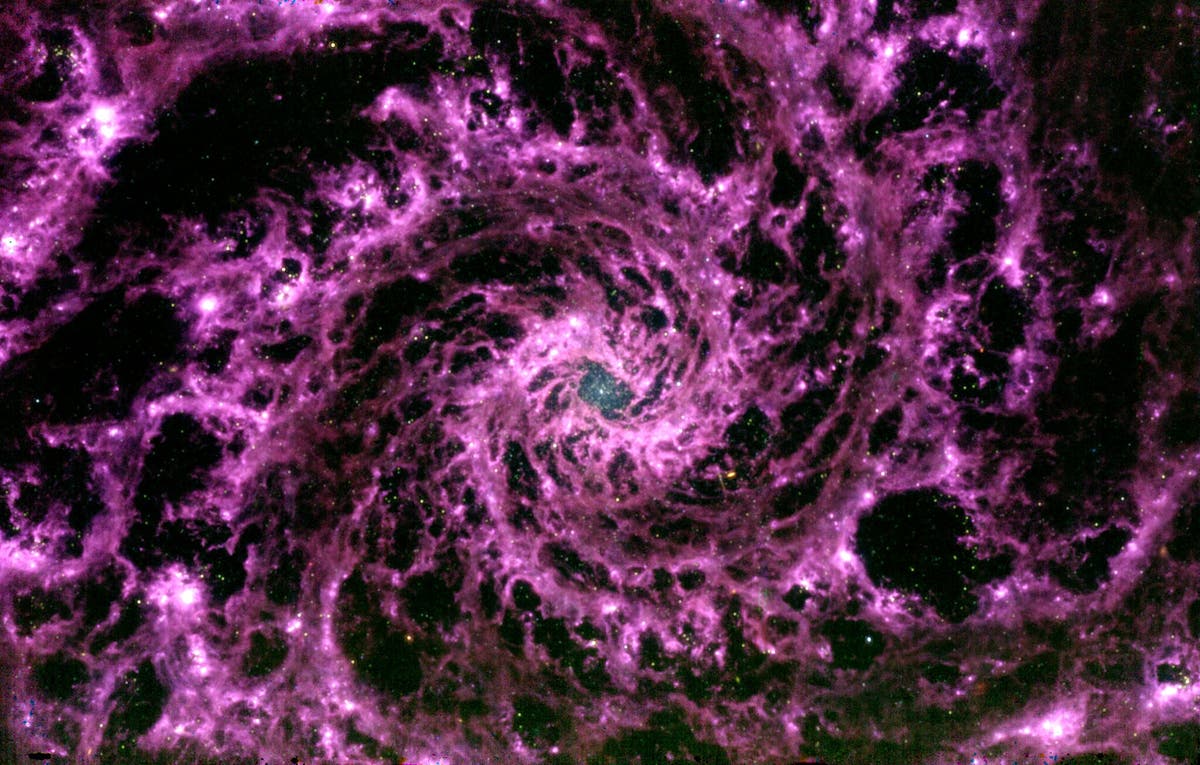
The latest James Webb Space Telescope image shows the dusty skeleton of the faraway galaxy NGC 628, which looks as if it is a terrifying psychedelic swirl from a Marvel movie rather than a spiral galaxy form familiar from visible observatories.
“This is a galaxy that probably looks a lot like what we think our galaxy looks like,” said Gabriel Brammer in an interview with The Independent. He is an astronomer at the Cosmic Dawn Center, and he is the one who shared the image on Twitter on Monday, 18th July.
“You can see all these knots of individual stars forming, individual supernovae have gone off and really study that in detail.”
While the spiral arms of the NGC 628 have been pictured before, the photographs taken by the Hubble Space Telescope do not look much like the purple spirals as seen in Webb’s mid-infrared picture.
James Webb captured an image of NGC 628 and transmitted it back to Earth
“You look at this galaxy with Hubble or with ground-based telescopes, you see blue stars, you see red stars, you see spiral forms, you see dust lanes,” said Dr. Brammer.
He stated: “In mid-infrared, what you’re actually kind of seeing is the inverse of that, where that dust is no longer absorbing; we’re actually observing directly that dust itself that’s now glowing because the dust itself is emitting. We’re actually seeing an image of the gas and the dust in this galaxy rather than the stars.”
On July 17, Webb captured an image of NGC 628 and transmitted it back to Earth, where it was logged in the Barbara Mikulski Archive for Space Telescopes (MAST), where the data is accessible to everyone, including the general public.
Dr. Brammer typically studies very distant galaxies rather than relatively nearby galaxies like NGC 628, but when he saw the raw image, he knew he had to color-course the image and share it.
“It was really the first thing that popped out. It really just blew me away the second I had it open on my screen.” Dr. Brammer said.
“While NASA made a giant showpiece out of showing the primary 5, full-color Webb photographs on 12 July. The telescope has hardly stood idle since and is frequently taking photographs and putting them in the MAST archive. For astronomers who’ve waited greater than 20 years for an opportunity to see what JSWT can do, it’s an extraordinarily thrilling occasion.”
“We’ve been waiting for Webb for decades and we’ve all not been sleeping much for the last week…It’s all just truly spectacular.” Dr. Brammer said.






